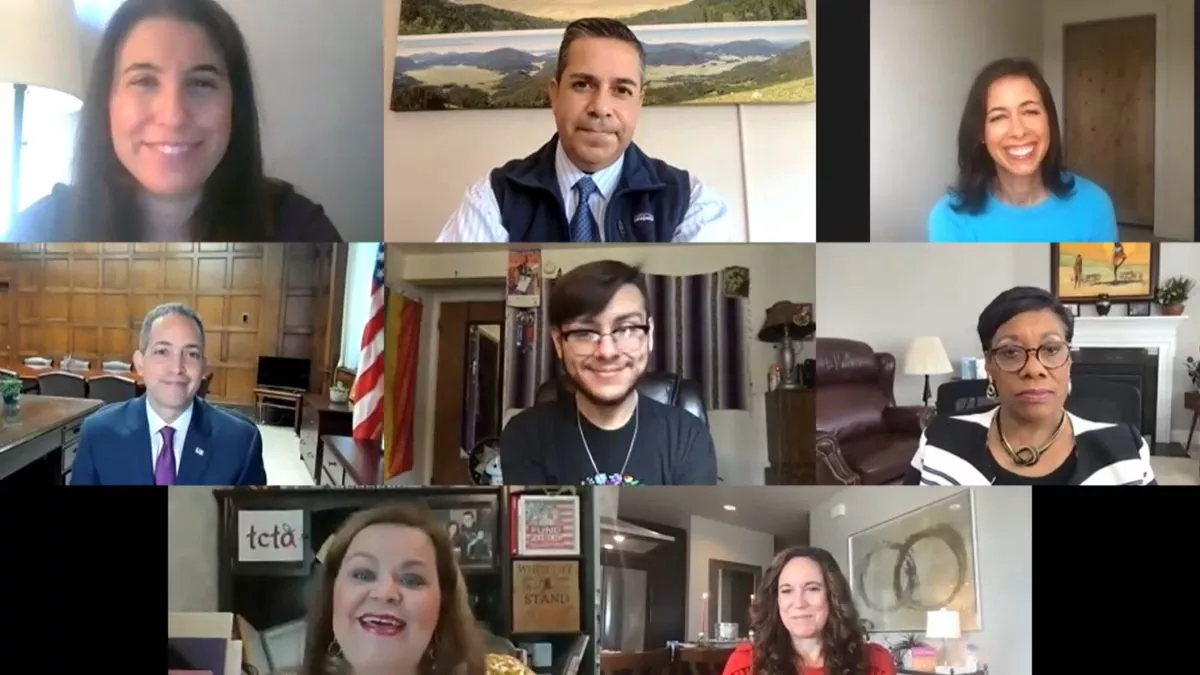Throughout the pandemic, students’ broadband access became a critical household issue. The homework gap was exacerbated when families lacked high-speed, affordable internet, access to the technology, or adequate knowledge to use either.
On Aug. 19, educators, legislators, and leaders discussed at a roundtable the technological aspects of providing equal access to education for every student, regardless of ZIP code.
“If our students can’t eat, they can’t learn. If they’re not healthy, they can’t learn. If they don’t have access to the internet, they can not learn,” said science teacher and NEA President Becky Pringle. Educators have led the call for widespread collaboration on the federal, state, and local levels to ensure our students are able to overcome this digital divide as students and educators continued schooling from home.
“What we need is greater access. What we need is better tools. What we need is more training and technology,” said Pringle, who helped advocate nationally for the E-Rate program, which prioritized investment in broadband access in communities disproportionately impacted by the pandemic. She continued, “We must come together to ensure when we say every student, we actually mean every student is prepared to succeed in a diverse and independent world.”
“What we need is greater access” —Becky Pringle
During the panel, she also called for more support, resources, and respect for educators of color who are leaving the education profession at disparate rates.
“I want to challenge us to envision a world in which where a child learns matters less. Can we imagine a world in which your demography doesn’t determine your destiny? Can we imagine a world where locality and modality will never matter when it comes to reaching and teaching our students?” said Deputy Secretary of Education Cindy Marten to the panel.
Along with the other panelists—Deputy Secretary of Commerce Don Graves, Acting FCC Chairwoman Jessica Rosenworcel, and U.S. Sen. Ben Ray Luján (NM)—Marten advocated for greater broadband access for all students and school communities. In San Diego, where Marten was superintendent for eight years prior to her most recent appointment, all K-12 students were eligible to receive a personal device at the beginning of the pandemic to support their learning needs.
“The reason my internet sucks is because of my ZIP code,” said Roman Trejo, a member of NEA Aspiring Educators and a student at Saint Xavier University in Illinois. Trejo shared that more could be done to aid college students and other school communities. He noted that the issues he faces are influenced by both infrastructure and affordability.
Trejo continued, “Racial-social justice is what I need and what my students deserve to have an equitable learning environment.”
In Tulsa, Okla., where Shawna Mott-Wright is a speech, drama, and debate teacher, 80 percent of her students are from lower-income families facing these systemic issues as well.
“We could expect to see about half of our students on a daily basis,” said Mott-Wright who teaches at Memorial High School of her experience during virtual learning last year.
The entire education system deserves greater investment, said Mott-Wright, from broadband infrastructure to increased pay for educators and school staff.
“Boundaries and respect, and respect comes in various forms, is what’s needed to put a tourniquet on the massive educator shortage. Congress needs to start with compensating teachers at a federal level in conjunction with state dollars,” said Mott-Wright, president of Tulsa Classroom Teachers Association. “I think that would really be a great start in making teachers feel respected and valued in their work.
As part of the bipartisan infrastructure deal, Congress has worked to invest $65 million to bring down the cost of broadband, and improve the lives of every American, specifically prioritizing rural communities and tribal lands, which have been historically underserved.

